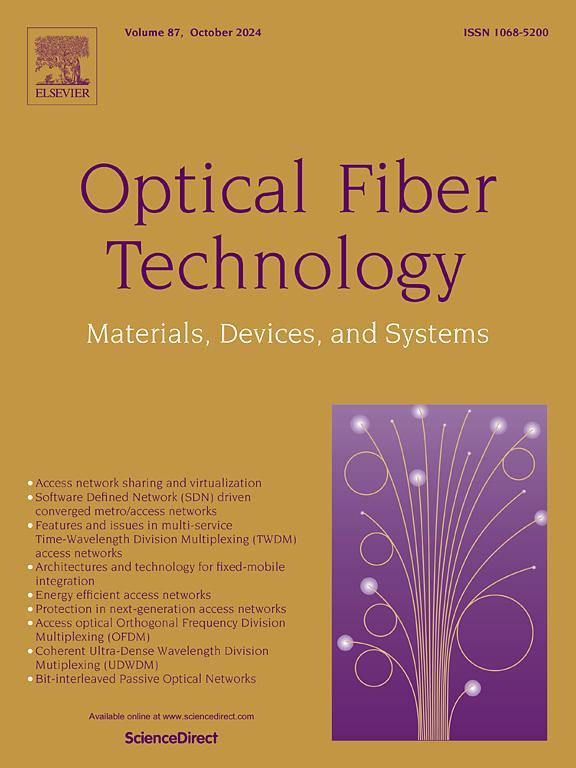通过可扩展且具有成本效益的EPON接入网络,增强沉浸式XR体验
IF 2.7
3区 计算机科学
Q2 ENGINEERING, ELECTRICAL & ELECTRONIC
引用次数: 0
摘要
消费者、企业和政府机构预计将越来越多地采用沉浸式服务,这些服务可以通过扩展现实(XR)设备实时访问。第三代合作伙伴计划(3GPP)使用截断高斯分布指定XR流量模型。我们建议分析并确定该流量模型在以太网无源光网络(EPON)系统中使用“具有自适应周期时间的交错轮询(IPACT)”动态带宽分配(DBA)方案时的最佳运行条件。这种流量需要高带宽、超低延迟、自适应响应和最小抖动的精确同步。EPON系统通过消除宽带接入网络中的瓶颈,并在核心网络和大容量本地或家庭网络之间提供经济高效的“最后一英里”连接,有效地解决了这些要求。本文评估了IPACT DBA方案下XR流量的性能,重点关注延迟和抖动。我们的目标是评估XR流量对现有DBA机制的影响,并确定最佳帧(rf)和数据速率(rd)条件,以提高PON系统中的XR性能。我们分析了关键性能指标,包括端到端平均数据包延迟(de2e)、归一化抖动(Jn)、平均授权大小(Gsize)、授权利用率(GU)、平均周期时间(Ctime)和带宽利用率(BWU)。本文评估了两种授权分配策略,有限服务和门控服务,每一种都是为了优化IPACT框架内的XR流量而量身定制的。我们提出的XR流量模型大大降低了de2e,增强了BWU,改善了对沉浸式应用的支持。本文章由计算机程序翻译,如有差异,请以英文原文为准。
Empowering immersive XR experience through scalable and cost-effective EPON access networks
Consumers, businesses, and government organizations are expected to increasingly adopt immersive services, which are accessed in real-time using eXtended Reality (XR) devices. The 3rd Generation Partnership Project (3GPP) specifies the XR traffic model using truncated Gaussian distribution. We propose to analyze and determine optimal operating conditions when this traffic model is used in an Ethernet passive optical network (EPON) system with the “interleaved polling with adaptive cycle time (IPACT)” dynamic bandwidth allocation (DBA) scheme. This traffic demands high bandwidth, ultra-low delay, adaptive responsiveness, and precise synchronization with minimal jitter. EPON systems address these requirements effectively by eliminating bottlenecks in broadband access networks and offering cost-effective and efficient “last mile” connectivity between core and high-capacity local or home networks. This work evaluates the performance for XR traffic under the IPACT DBA scheme, focusing on delay and jitter. We aim to assess the impact of XR traffic on existing DBA mechanisms and determine the optimal frame () and data rate () conditions to enhance XR performance in PON systems. We analyze the key performance metrics, including end-to-end mean packet delay (), normalized jitter (), average grant size (), grant utilization (), average cycle time (), and bandwidth utilization (). This paper evaluates two grant allocation policies, limited and gated services, each tailored to optimize XR traffic within the IPACT framework. Our proposed XR traffic model substantially reduces and enhances , improving support for immersive applications.
求助全文
通过发布文献求助,成功后即可免费获取论文全文。
去求助
来源期刊

Optical Fiber Technology
工程技术-电信学
CiteScore
4.80
自引率
11.10%
发文量
327
审稿时长
63 days
期刊介绍:
Innovations in optical fiber technology are revolutionizing world communications. Newly developed fiber amplifiers allow for direct transmission of high-speed signals over transcontinental distances without the need for electronic regeneration. Optical fibers find new applications in data processing. The impact of fiber materials, devices, and systems on communications in the coming decades will create an abundance of primary literature and the need for up-to-date reviews.
Optical Fiber Technology: Materials, Devices, and Systems is a new cutting-edge journal designed to fill a need in this rapidly evolving field for speedy publication of regular length papers. Both theoretical and experimental papers on fiber materials, devices, and system performance evaluation and measurements are eligible, with emphasis on practical applications.
 求助内容:
求助内容: 应助结果提醒方式:
应助结果提醒方式:


